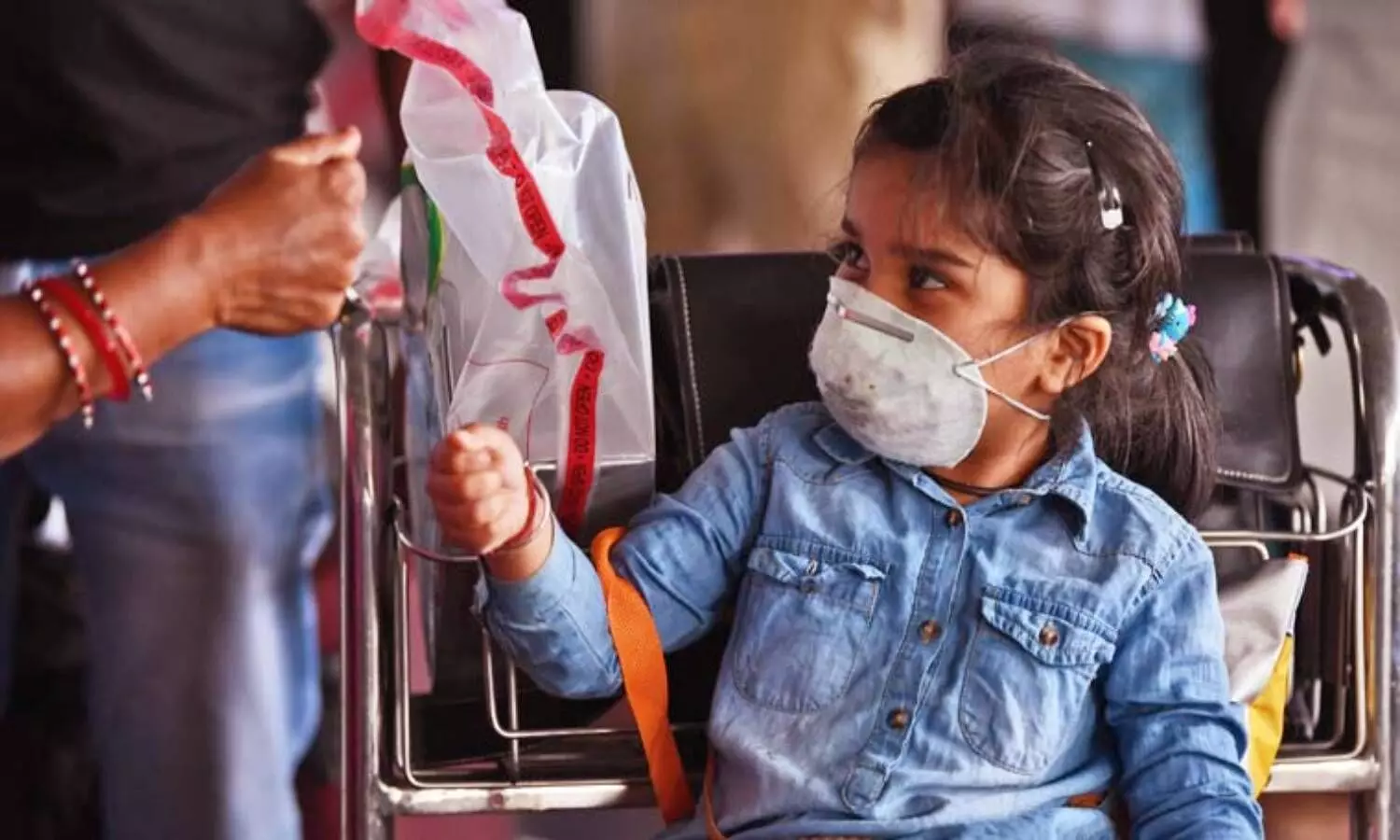Children with COVID-19: Here is everything you need to know
By Dr Mahishma K
Hyderabad: When six-year-old Abhiram (name changed) and his father tested positive after the whole family was exposed to the virus, he, like most of the children, was asymptomatic for the first few days. However, Abhiram developed fever that lasted all through the day and the virus made him dull.
Abhiram was confined to the bed most of the time. It was during this critical phase that his father, Mr. Bhaskar, sought medical help early on for his son, carried out blood tests and monitored his temperature and saturation regularly. After completing his oral medication course, Abhiram is without any symptoms and his blood tests are all within normal limits. He is now back to his happy play activities - all within 10 days.
During the first wave of COVID-19 infections in India, a very less number of children contracted the virus. This has of course changed now with the second wave. There has been a steady rise in the number of children getting infected this time. In what is also a significant change from last year, more kids are becoming symptomatic and some are requiring hospital admissions. Children less than a year old and newborns, too, are contracting the virus.
There are multiple reasons that are now being put forward by researchers for this new phenomenon. One of them being the emergence of new mutant strains of the virus and also letting the guard down on COVID-appropriate behaviour.
The common things to know and practice during this time include:
1. If parents have tested positive, kids should be tested as well without delay to prevent spread.
2. Fever, cold, cough, sore throat, vomiting, diarrhea, abdominal pain, red eyes, and rashes on the body are some of the commonly noted symptoms.
3. A consultation with paediatrician is a must if these symptoms are noted.
Most of the children, fortunately, are recovering with medication and home care. Some children, however, do require hospital admissions. In fact, there is again a significant increase in paediatric COVID admissions this time.
Most of these are children who have co-infections with Typhoid or Dengue and thus need to be treated simultaneously along with COVID-19 infection. Although symptoms of cough, cold, and breathing difficulty are seen in moderate to severe cases of COVID-19, a vast majority of them are treatable.
Owing to their young age, some children get febrile seizures (seizure episode when a child is running a fever) and need hospital care, like in the case of one-year-old Manasa (name changed). While under isolation with her family, she developed febrile seizures and her saturation levels dropped to 91%. When the baby was not responding to them the family was in a dilemma whether her lungs were the problem. She was rushed to a hospital late at night where she was treated for febrile seizures - the reason for a drop in saturation (common in younger children) and not because of any lung involvement. She was monitored closely for any other warning signs of serious COVID infections and discharged after three days once she was free of all symptoms.
Once the child has contracted the virus, it is thus important to regularly monitor the child's Spo2 and temperature. Keeping a watchful eye on their activity (dull looking, not playful indicates they are getting sick), sleep patterns (excessively drowsy, confined to bed), and appetite (poor or loss of appetite) also gives us clues when to seek early medical help and avoid rare complications.
Along with these, one of the common dilemmas that parents are facing is about breastfeeding a baby when the mother is COVID-positive. There is no concrete evidence yet to show the transmission of the virus through breast milk.
Case study:
When Mrs. Nukamani (26) got admitted to the hospital to deliver her child, all that the couple had in mind was their plans to take home their bundle of joy and enjoy parenthood. However, Nukamani tested positive for COVID-19 on admission. Her delivery went seamless and she was discharged with medications for mild COVID symptoms.
The couple then began the hard task of looking after a newborn while following COVID-appropriate behaviour. Nukamani used to feed her child wearing a mask and shield and her husband took care of the baby at all other times to reduce the risk of transmission for 14 days. The mother and baby are now healthy and COVID-free.
Mothers wearing a mask and preferably a face shield while feeding and maintaining physical distance from the baby at other times is a good practice to follow as the benefits of breastfeeding outweigh the risks of transmission.
Again, testing without hesitancy, following COVID-appropriate behaviour at households, keeping a close watch on children's symptoms, and seeking medical help early are the key things which will help to overcome COVID-19 without any untoward consequences.